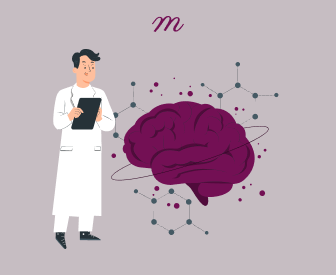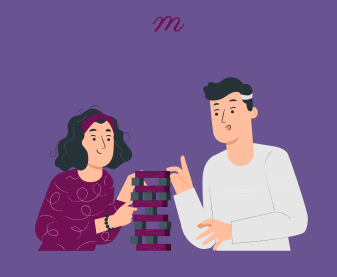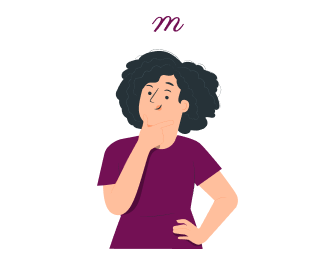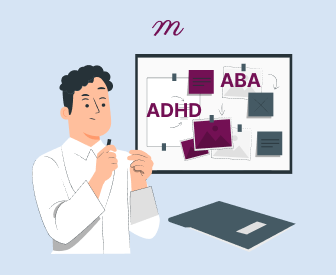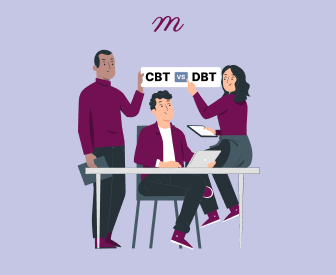Have your progress notes written for you automatically
Behavioral Activation Therapy (BAT) is gaining traction as a highly effective method for treating mental health issues, particularly depression and anxiety. Unlike other therapies that dive deep into thoughts and emotions, BAT is action-oriented, focusing on re-engaging individuals with their environment through purposeful activities. This approach helps break the cycle of withdrawal and negative emotions, offering a pathway to improved well-being.
In today’s world, where mental health challenges are increasingly common, understanding practical treatment options like BAT is essential. This article explores how Behavioral Activation Therapy works, its key components, and provides a real-life example to illustrate its effectiveness.
What is Behavioral Activation Therapy?
Behavioral Activation Therapy is a structured, evidence-based approach rooted in the principles of Cognitive Behavioral Therapy (CBT). It was originally created from Jacobson's (1996) study of the components of Beck's CBT, in which the behavioral component alone was found to be equally effective. BAT emerged as a stand-alone treatment for depression but has since proven effective for various mental health conditions.
The theory behind BAT is simple: depression often stems from a lack of positive reinforcement in one’s environment. This lack leads to a vicious cycle where individuals withdraw from activities, worsening their mood. BAT interrupts this cycle by encouraging engagement in meaningful and rewarding activities, helping to lift the emotional fog that often accompanies depression and anxiety.
How Behavioral Activation Therapy Works
Behavioral Activation Therapy is based on the idea that depression often stems from a lack of positive experiences and the tendency to engage in activities that worsen a low mood. Here’s how BAT helps break this cycle:
Planning Positive Activities :
The core of BAT involves scheduling meaningful activities that align with what matters most to each one. By doing things that bring joy or satisfaction, you can disrupt the cycle of avoidance and negativity that fuels depression. Research shows that this method can be just as effective as cognitive therapy and antidepressants (Dimidjian et al., 2006).
Facing Avoidance Head-On :
Depression often leads to avoiding tasks or situations because of fear or doubt. BAT helps identify these avoidance patterns and encourages people to gradually reintroduce activities that can boost their mood and sense of achievement (Jacobson et al., 2006).
Building Positive Reinforcement :
BAT focuses on increasing the exposure to positive experiences, whether through social interactions, hobbies, or other fulfilling activities. By doing more of what makes them feel good, BAT helps break the cycle of depression and promotes a more positive outlook (Sturmey, 2009).
Studies have shown that BAT is highly effective in treating depression, comparable to cognitive-behavioral therapy (CBT). It’s also a cost-effective option, especially in settings where traditional therapy may not be accessible (Lejuez et al., 2001).
The role of the therapist in BAT is crucial. They guide clients through the process, helping to identify problematic behaviors, set achievable goals, and provide motivation to overcome challenges. This collaborative approach empowers clients, giving them a sense of control over their mental health journey.
Key Components of Behavioral Activation Therapy
BAT revolves around several core components:
Activity Monitoring
Activity monitoring is the starting point in BAT. Clients track their daily activities alongside their moods to uncover patterns contributing to their depression, such as frequent avoidance or inactivity. By closely examining these patterns, clients gain insight into how their behaviors affect their mood, laying the groundwork for meaningful change (Quigley & Dobson, 2017).
Activity Scheduling
After identifying unhelpful patterns, the next step is activity scheduling. This involves carefully planning activities that are likely to boost mood and align with the client’s values and goals. The purpose is to gradually reintroduce rewarding or meaningful experiences into their daily routine, helping them shift from avoidance to active engagement with life (Dimidjian et al., 2006).
Targeting Avoidance Behaviors
A critical focus of BAT is addressing avoidance behaviors—those actions (or inactions) that clients use to escape distressing emotions or situations. These avoidance strategies often intensify depression over time. BAT helps clients identify these behaviors and encourages them to face these challenges through manageable activities, reducing the grip that avoidance has on their lives (Jacobson et al., 2006).
Increasing Positive Reinforcement
Central to BAT is increasing clients’ exposure to positive reinforcement. This means encouraging participation in activities that bring pleasure or a sense of accomplishment, which can significantly improve mood. By systematically integrating more rewarding experiences into their lives, clients can break the negative cycle that sustains depression (Sturmey, 2009).
Goal Setting and Values Assessment
Goal setting in BAT is deeply connected to the client’s values. This process involves helping clients identify what truly matters to them and then setting realistic, meaningful goals that reflect these values. This ensures that the activities chosen in therapy are purposeful and resonate with what the client finds most important in life (Davis et al., 2019).
Contingency Management
Finally, contingency management is about creating an environment that supports new, positive behaviors. This might involve reinforcing desired behaviors—like rewarding oneself after completing a challenging task—or removing elements that reinforce depressive behaviors. Effective contingency management can help clients maintain and build upon the progress they make in therapy (Hopko et al., 2003).
By understanding and applying these core components, therapists can use Behavioral Activation Therapy to help clients break free from the cycle of depression and move towards a more engaged and fulfilling life.
These components work together to help clients move from avoidance and withdrawal to active engagement in life, making BAT an effective tool for treating depression.
Case Study: Overcoming Depression
This is an example from Barlow’s Clinical handbook of psychological disorders: A step-by-step treatment manual (2008).
Mark, a 43-year-old man with a long history of depression, sought therapy following the end of his second marriage. He had been experiencing a persistent depressive episode for three years, characterized by symptoms such as a low mood, loss of pleasure, guilt, fatigue, and occasional thoughts of death. Mark had a history of alcohol abuse, which significantly impacted his first marriage, but he was no longer struggling with substance use.
Mark’s depression was understood as being driven by a pattern of avoiding close relationships and engaging in ruminative thinking, particularly about past mistakes and failures. This avoidance was hypothesized to be a defense mechanism to protect himself from experiencing intense emotional pain similar to what he felt when his father abruptly left the family during his childhood.
The therapy focused on increasing Mark’s engagement in meaningful activities and addressing his tendency to ruminate as a way to avoid intimacy. Although Mark quickly increased his activity level, his mood did not initially improve, leading the therapist to shift focus to understanding and modifying his ruminative behaviors. This is compatible with BAT, since each person might need a different approach.
Over the course of 19 sessions, the therapist worked with Mark to identify specific situations where avoidance and rumination were most pronounced and developed strategies to help him engage more fully in life. The goal was to gradually reintroduce rewarding experiences and to help Mark move closer to his goal of having close, intimate relationships, ultimately aiming to alleviate his depressive symptoms.
Benefits and Effectiveness of Behavioral Activation Therapy
Research supports the effectiveness of BAT in treating depression and anxiety. Studies have shown that BAT can be as effective as antidepressants and, in some cases, more effective than other forms of cognitive therapy, particularly for individuals with severe symptoms.
The advantages of BAT include its direct, action-oriented approach, making it accessible and easy to implement. It is particularly suitable for those struggling with severe symptoms who may find it challenging to engage in therapies focused on cognitive restructuring.
Potential Challenges and Limitations
While BAT is effective for many, it’s not without challenges. Some clients may struggle with motivation or be resistant to changing long-standing habits. Additionally, BAT requires active participation, which can be difficult for individuals with severe symptoms.
BAT is not a one-size-fits-all solution. It may need to be combined with other therapies for those with complex or comorbid conditions, and it may not address deeply ingrained cognitive distortions.
Conclusion
Behavioral Activation Therapy offers a practical, action-oriented approach to improving mental health. By focusing on increasing engagement in positive activities and reducing avoidance behaviors, BAT helps individuals regain control over their lives and emotions.
For those battling depression, anxiety, or similar challenges, BAT could be a significant step towards recovery. However, it’s important to seek professional guidance to determine if BAT or another treatment approach is the best fit for your unique situation. Taking that first step toward seeking help is crucial in the journey to better mental health.
If you or someone you know is experiencing mental health difficulties, don’t hesitate to reach out to a qualified mental health professional.
References:
Barlow, D. H. (Ed.). (2008). Clinical handbook of psychological disorders: A step-by-step treatment manual (4th ed.). Guilford Press.
- Barlow, D. H. (Ed.). (2008). Clinical handbook of psychological disorders: A step-by-step treatment manual (4th ed.). Guilford Press.
Dimidjian, S., Hollon, S., Dobson, K., Schmaling, K., Kohlenberg, R., Addis, M., Gallop, R., McGlinchey, J., Markley, D., Gollan, J., Atkins, D., Dunner, D., & Jacobson, N. (2006). Randomized trial of behavioral activation, cognitive therapy, and antidepressant medication in the acute treatment of adults with major depression. Journal of consulting and clinical psychology, 74 4, 658-70 . https://doi.org/10.1037/0022-006X.74.4.658.
- Dimidjian, S., Hollon, S., Dobson, K., Schmaling, K., Kohlenberg, R., Addis, M., Gallop, R., McGlinchey, J., Markley, D., Gollan, J., Atkins, D., Dunner, D., & Jacobson, N. (2006). Randomized trial of behavioral activation, cognitive therapy, and antidepressant medication in the acute treatment of adults with major depression. Journal of consulting and clinical psychology, 74 4, 658-70 . https://doi.org/10.1037/0022-006X.74.4.658.
Jacobson, N. S., Dobson, K. S., Truax, P. A., Addis, M. E., Koerner, K., Gollan, J. K., Gortner, E., & Prince, S. E. (1996). A component analysis of cognitive-behavioral treatment for depression. Journal of consulting and clinical psychology, 64(2), 295–304. https://doi.org/10.1037//0022-006x.64.2.295
- Jacobson, N. S., Dobson, K. S., Truax, P. A., Addis, M. E., Koerner, K., Gollan, J. K., Gortner, E., & Prince, S. E. (1996). A component analysis of cognitive-behavioral treatment for depression. Journal of consulting and clinical psychology, 64(2), 295–304. https://doi.org/10.1037//0022-006x.64.2.295
Jacobson, N., Martell, C., & Dimidjian, S. (2006). Behavioral Activation Treatment for Depression: Returning to Contextual Roots. Clinical Psychology-science and Practice, 8, 255-270. https://doi.org/10.1093/CLIPSY.8.3.255.
- Jacobson, N., Martell, C., & Dimidjian, S. (2006). Behavioral Activation Treatment for Depression: Returning to Contextual Roots. Clinical Psychology-science and Practice, 8, 255-270. https://doi.org/10.1093/CLIPSY.8.3.255.
Lejuez, C., Hopko, D., & Hopko, S. (2001). A Brief Behavioral Activation Treatment for Depression. Behavior Modification, 25, 255 – 286. https://doi.org/10.1177/0145445501252005.
- Lejuez, C., Hopko, D., & Hopko, S. (2001). A Brief Behavioral Activation Treatment for Depression. Behavior Modification, 25, 255 – 286. https://doi.org/10.1177/0145445501252005.


